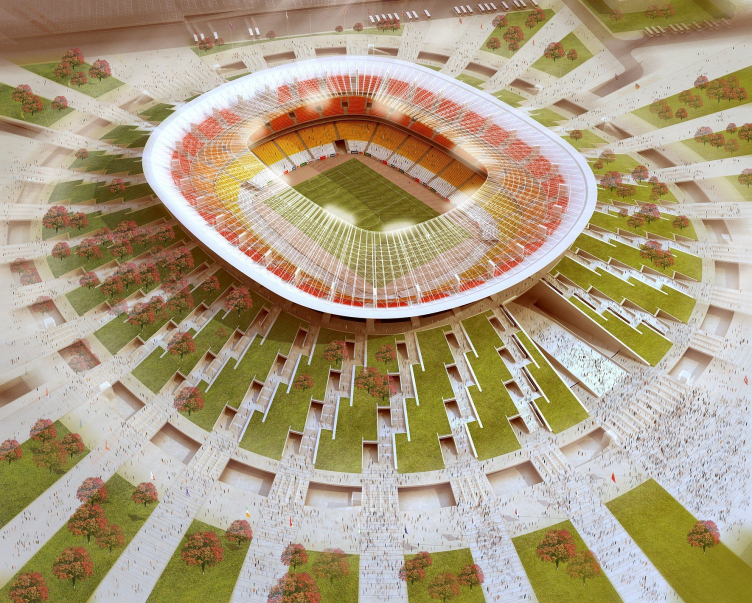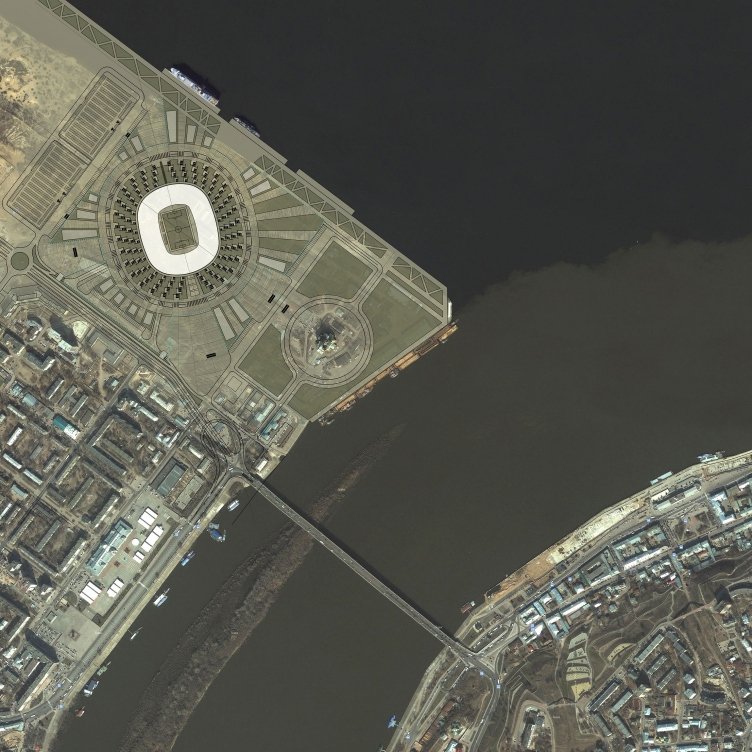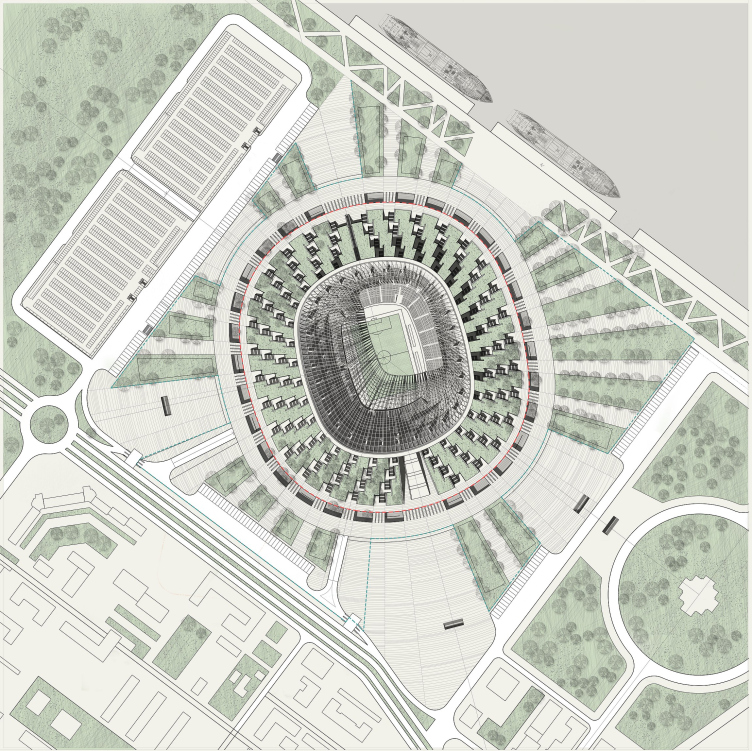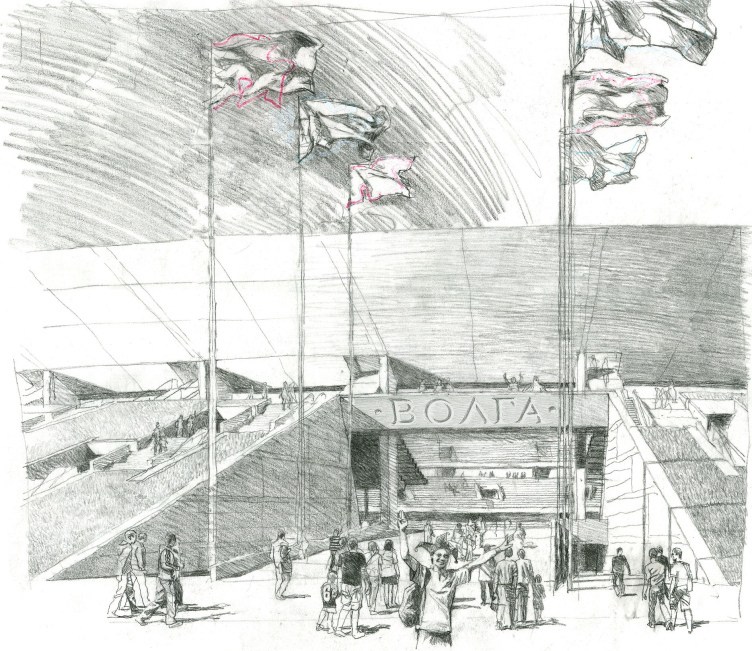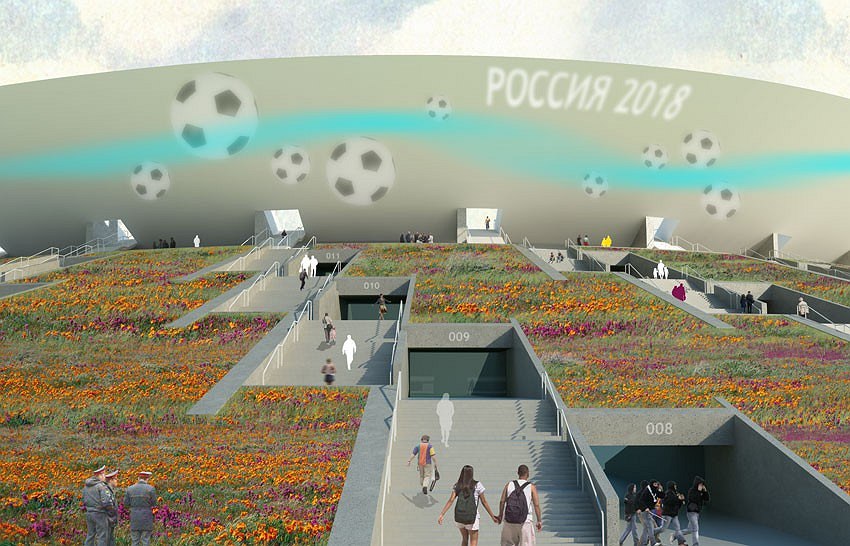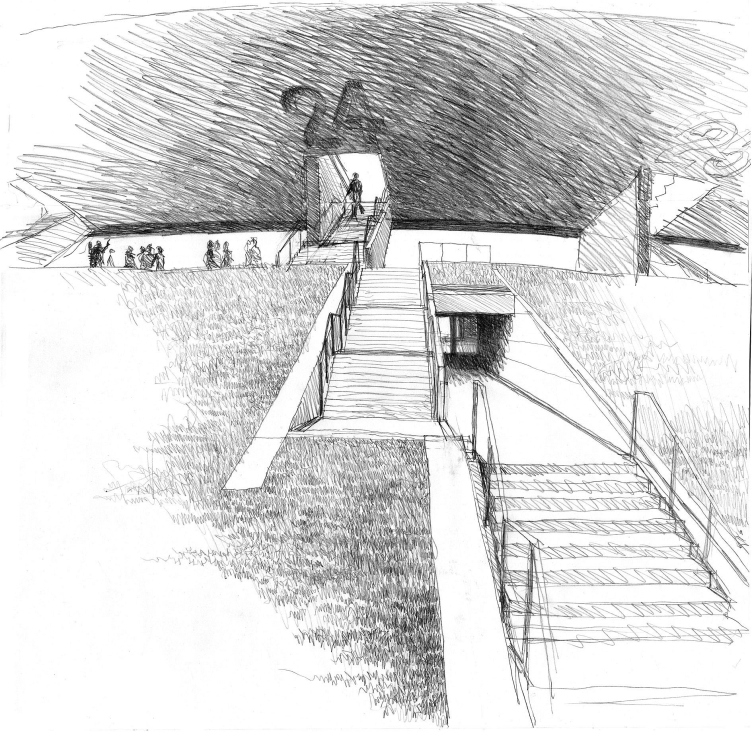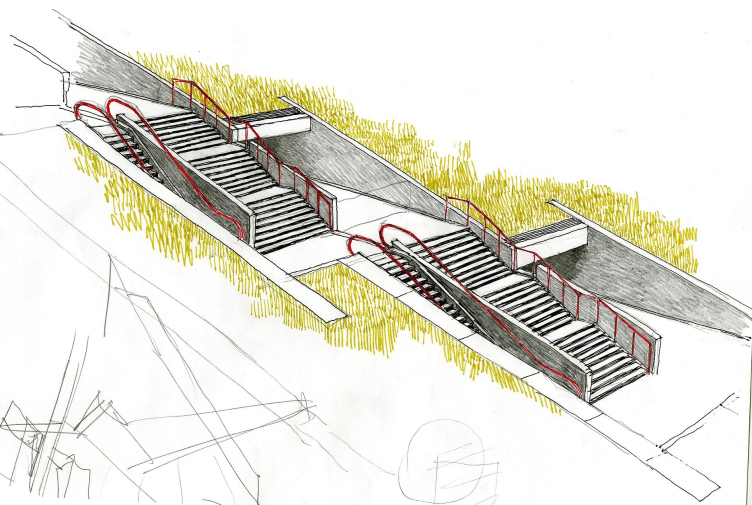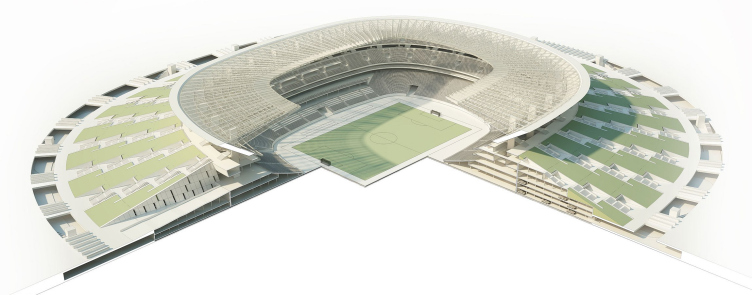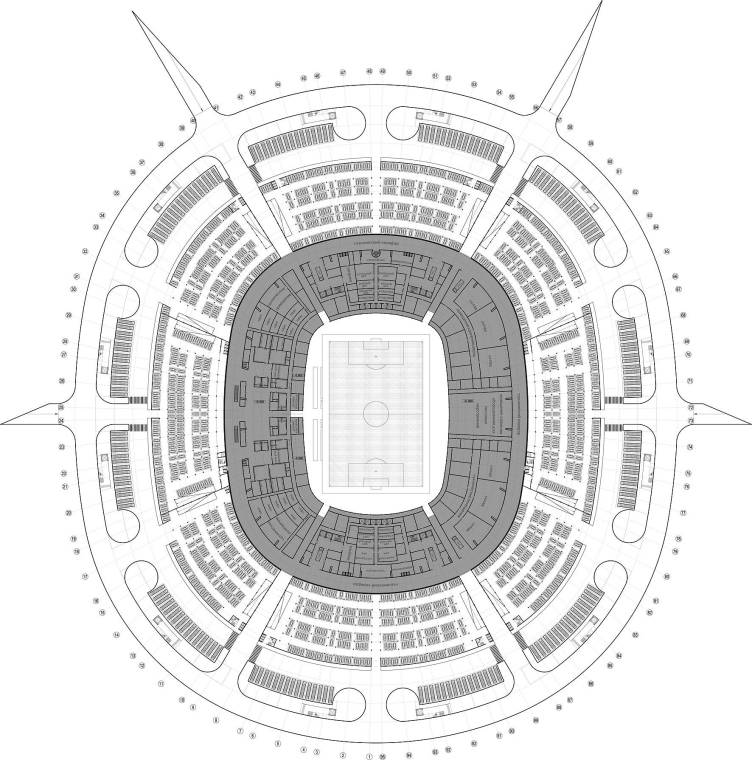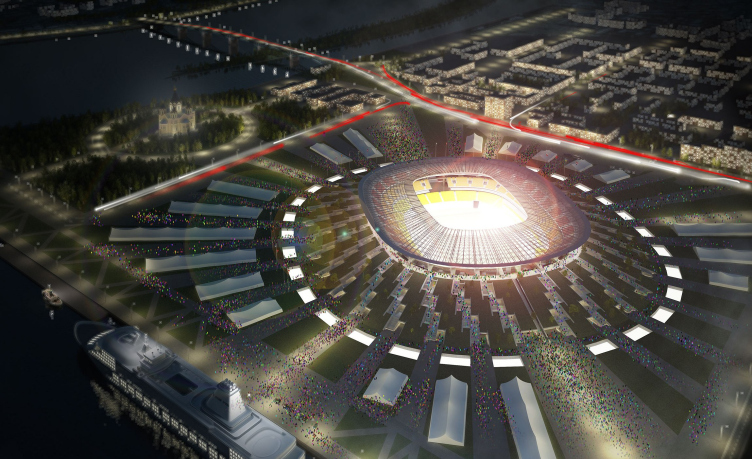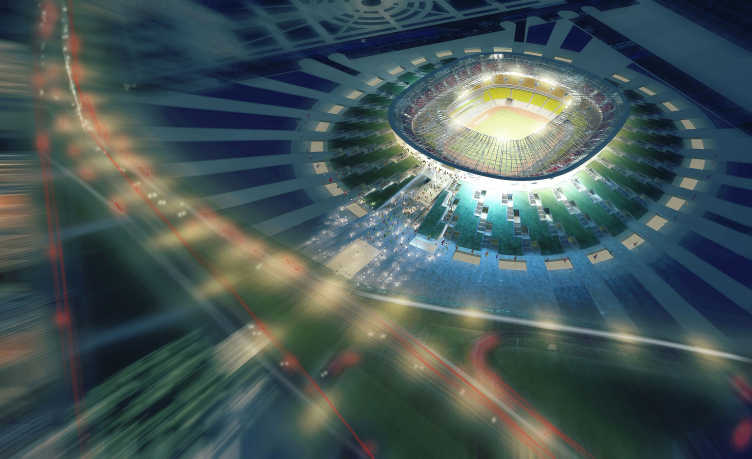The construction site is located
on the left bank of the Oka right where it flows into the
“Studio
The green slopes of this hill are traversed by thirty stairways leading to the
stands of each spectator sector, and, shifted relatively to one another in a
staggered fashion, they form strikingly looking diagonal cutaways. Apart from the
stairways, the stadium’s vertical communications system includes elevators and
moving stairs in the main entrance area, where the hill grandly “opens up”. It
is these top 9-thousand-seat stands that will provide the arena with the total
capacity that is necessary for the organization of football games of the world’s
and Europe’s championships.
The pylons raise the upper stands three meters above the hill, which makes the
cup look like it hovers above the ground. The subliminal likeness to a UFO is
strengthened manifold by the stairways running along each of the pylons: in the
bottom of the “cup” the architects cut rectangular “portals”, out of which,
numerous ladders fall down to the ground.
The slopes of the hill will help the sport complex to maintain a comfortable microclimate,
accumulating warmth in the wintertime and providing the premises from
overheating in the summertime. Apart from that, the facades executed in the shape
of a terrace park will become the generators of fresh air and will provide an
unprecedented percentage of site landscaping, while the slopes of the green
hill and the passage over the viewing platforms will make it possible to
organize exciting architectural guided tours here. In other words, the stadium built
as a terrace park and having no shortage of viewing platforms and entertainment
spots will become not only the city’s epicenter of major sport events and a
high-profile sight but also a great attraction for people from all walks of
life.
Hill of Fame
Among other cities, the list of possible candidates to host FIFA World Cup in 2018 includes Nizhniy Novgorod. For the famous Nizhniy Novgorod’s “Strelka” (“Arrow”, place where the Oka flows into the Volga), “Studio 44” has designed a stadium in the shape of man-made green hill topped off with a white cup.





